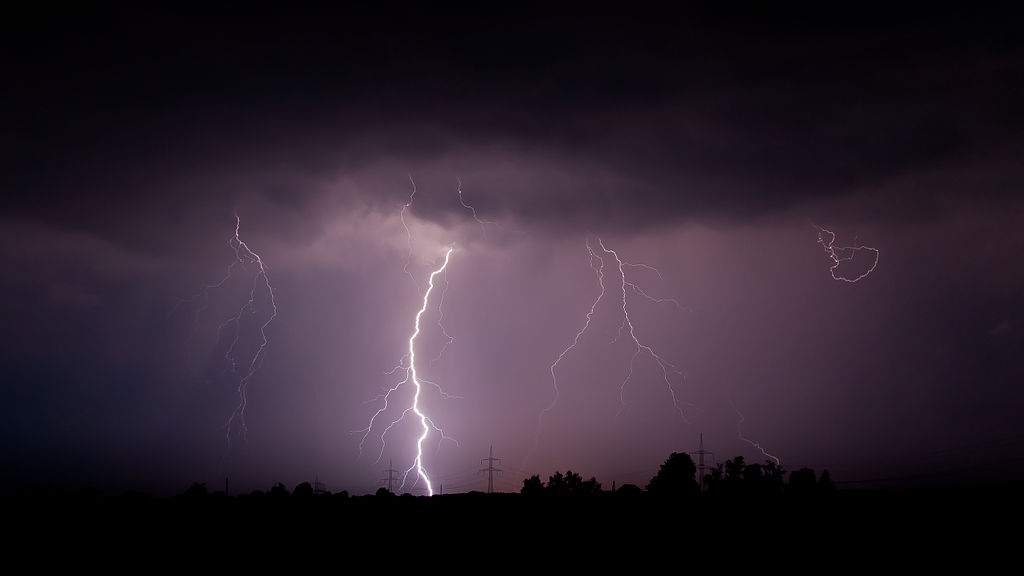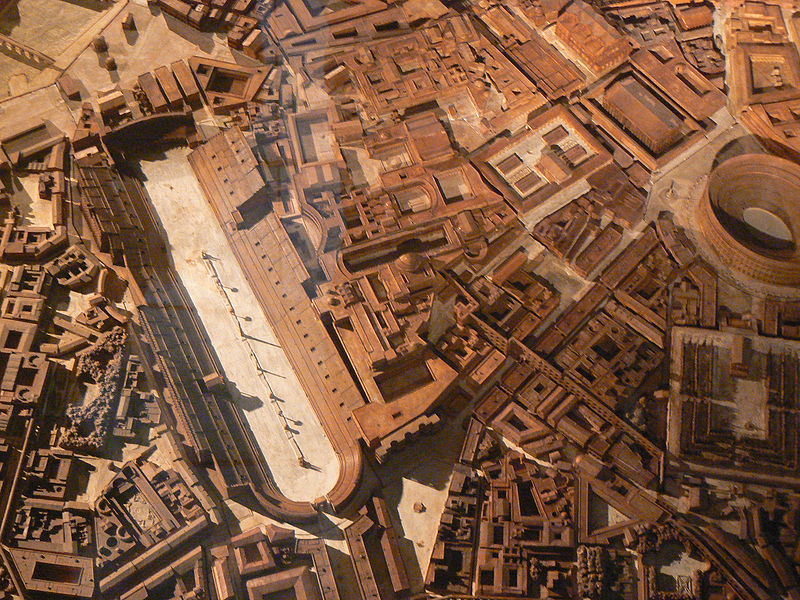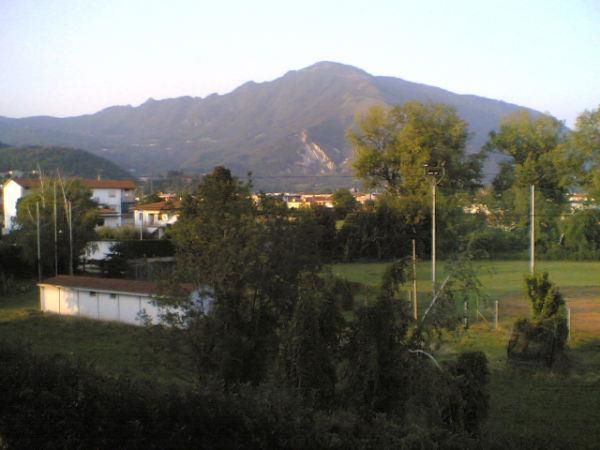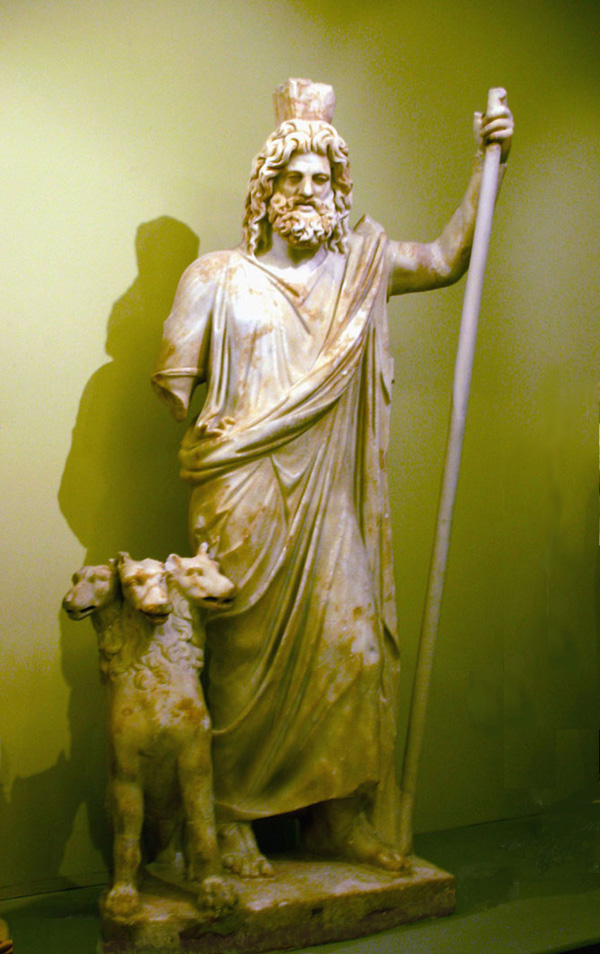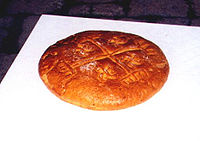June 20th: Ancient Roman Festival to Summanus Posted by Brittany Britanniae on Jun 18, 2014 in Latin Language, Roman culture
Salvete Omnes!
I hope that everyone is enjoying their summer! I decided in honor of the summer solstice (the official first day of summer) that I would write about a unknown Roman festival and deity. As many of you know, the Ancient Romans were polytheists; thus, they had many gods they needed to appease throughout the year. June 20th, the day before the summer solstice, was actually a holiday for one of their more obscure deities: Summanus.
WHO WAS SUMMANUS?
Summanus was a deity of evening or nocturnal lightning, while Jupiter (or Zeus) was a deity of diurnal or daytime lightning; as St. Augustine attests to in his De Civitate Dei Book IV, Chapter 23: “diurna Jovis, nocturna Summani fulgura habentur*” Daytime lightning(s) were held by Jove, nocturnal lightning(s) were held by Summanus.”
WHAT DID THE ROMANS THINK OF HIM?
St. Augustine furthers asserts concerning Summanus: “coluerunt magis quam Jovem.” “They cared (for Summanus) rather than Jove (Jupiter).”
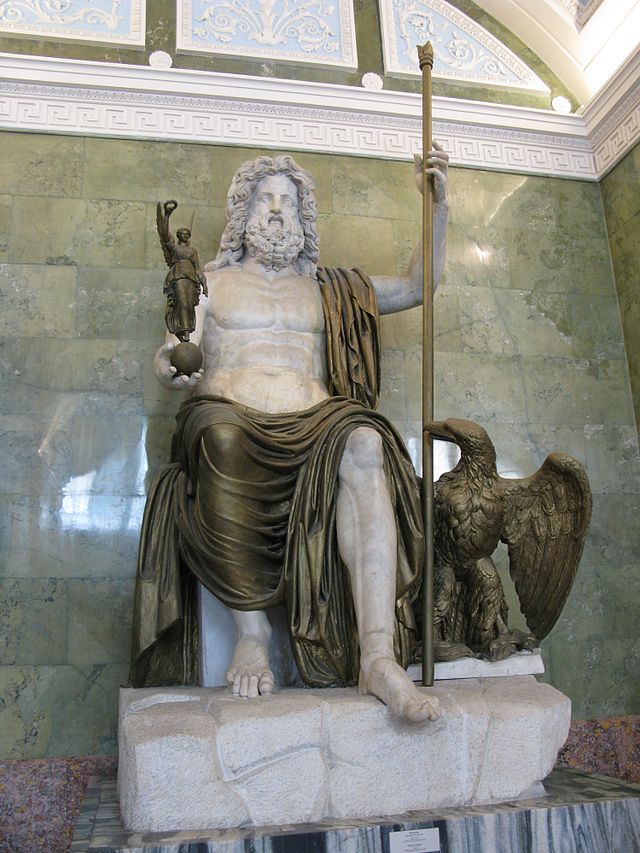
A marble statue of Jupiter from c. 200 CE Courtesy of WikiCommons, Andrew Bossi, 8646 – St Petersburg – Hermitage – Jupiter, Bobisbob
So, it clear that the Romans had a distinct affinity to this deity even over the king of gods: Jupiter. Cicero (De Divinatione Book 1 Chapter 10):
de fulgurum vi dubitare num possumus? Nonne cum multa alia mirabilia, tum illud in primis: Cum Summanus in fastigio Iovis optumi maxumi, qui tum erat fictilis, e caelo ictus esset nec usquam eius simulacri caput inveniretur.
Are we able to doubt about the (prophetic) force of lightning? Are there not many other (times) with (this) wonders/miracles? At this time, is the following not especially (an example)? When Summanus, on the pediment of greatest and best Jupiter, who (Summanus) was then made of clay (i.e a statue), from the heavens it was struck (lightning), and not anywhere was the head of his statue found.
In response to this omen, it is said that a temple was built to Summanus near the Circus Maximus.
As the Roman poet Ovid wrote in his Fasti 6 731-732:
“Quisquis is est, Summano templa feruntur, tum, cum Romanis, Pyrrhe, timendus eras.”
A temple was built to Summanus, whoever he is, at that time, when you, Pyrrhus, were a terror the Romans.**
It is clear by this quote that the origin and even the god “Summanus” was somewhat of an enigma amongst his own worshippers and followers.
ETYMOLOGY
Summanus may simply be an evolution from summus meaning highest. Perhaps it is also related to manus meaning hand. Thus, the combination of the name could evoke the imagery of the highest hand throwing down lightning bolts to the earth. Another theory concerning Summanus’ name is that it is a combination of summus and the term manus which is sort of underworld deity. [For more exploration of this deity and his name; look here.] There is an Italian mountain, Monte Summano (sometimes spelled with only one M), that may have even been named after this obscure deity. Curiously, the mountain top is frequently hit by lightning bolts.
MOUNT SUMMANO: WHOSE MOUNTAIN?
Traditionally Mount Summano (elevation 1291 m.) in the Alps near Veneto, Italy is considered a site of the cult of god Pluto, Jupiter, Summanus and the Manes.
A manus or the manes (plural) were chthonic deities (deities of the earth or underworld [chthonic] who were usually sacrificed dark animals as opposed to air deities [Olympian] who were offered light colored animals) that were closely resembled of the Lares or household deities. Martianus Capella (De nuptiis Philologiae et Mercurii Book II, Chapter 164) thought that Summanus was simply another name for Pluto.
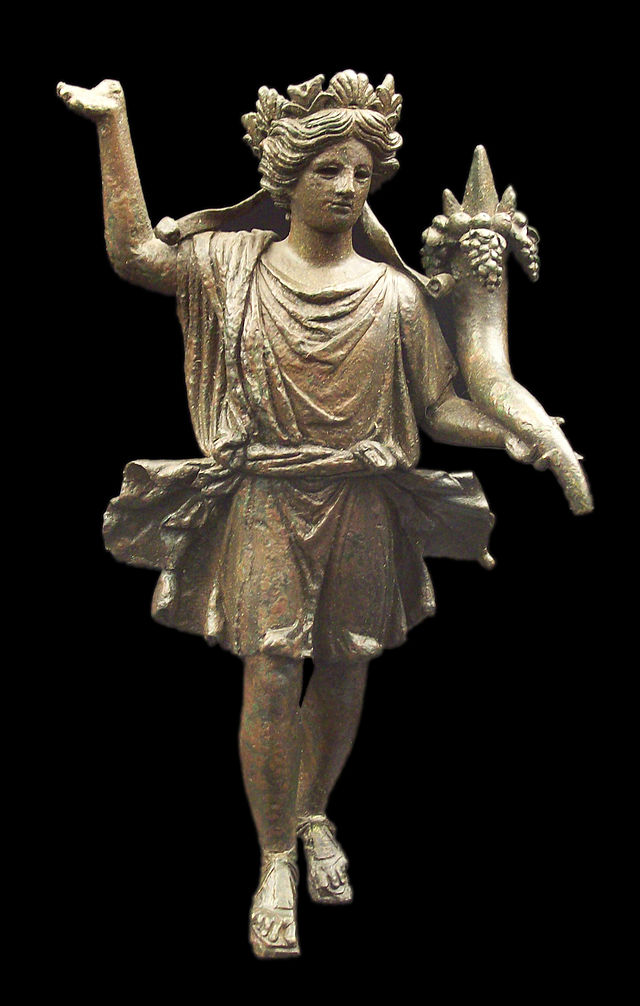
Lar holding a cornucopia from Lora del Rio in Roman Spain, early 1st century AD (National Archaeological Museum of Spain) Courtesy of WikiCommons & Luis García .
Pluto who was the Roman equivalent to Hades was lord of the Underworld and brother of Jupiter (or Zeus). Jupiter traditional being the king of the gods and the male supreme god of the air, ethereal region, and heavens. While, Pluto resigned in Hades where he reigned in darkness, death, and the afterlife.
Thus, the correlation between Pluto and Summanus at Monte Summano may not be coincidental. Agreeing with Martianus Capella, Summanus simply may be a different aspect of Pluto. Jupiter and Pluto were brothers, but often are seen as complete opposites. One is light, and one is dark (the yin and the yang if you will.) Therefore, perhaps this “Pluto Summanus” (lord of evening lightning) is simply the aspect of Pluto that contrasts Jupiter’s supremacy over daytime lightning.
SANCTUARY & FLORAL POPULATION
“Archeological excavations have found a sanctuary that dates back to the first Iron Age (9th century BCE) and was continuously active till late antiquity (at least the 4th century CE). The local flora is very peculiar as in ancient times pilgrims used to bring flowers from their native lands.”
In research for this blog entry, I was attempting to find a picture of at least one flower that may be found on this mountain(Easier said than done!). I made an interesting discovery. In Gardeners Chronicle & New Horticulturist (view it here) an article from 1905 on the species of the Daphne (Yes, this is taken from the Daphne who runs away from Apollo). At the bottom of the first column, there is a paragraph dedicated to this wondrous flower. The entry goes:
“The plant requires sunshine and calcareous rock. I found it last year on Monte Summano exposed to the hottest sun on the dolomite rocks with hardly any soil. It forces its roots into the living rock and so finds needful freshness and nourishment.”
As of today, this particular flower is only found in the Alps (where Monte Summano is) and is a protected plant. Due to the fact that this flower is only now existent near Monte Sumano or within a general pollinating area, I would conjecture that the original source from which the flower existed is gone. I would argue, henceforth, that this was one of the many floral offerings brought to the ancient sanctuary and thus one of the “peculiar” floral populations on Monte Sumano. For a closer and more extensive look at this flower, direct your attention here.
FESTIVAL & CELEBRATIONAS : LET THEM EAT CAKES & BBQ
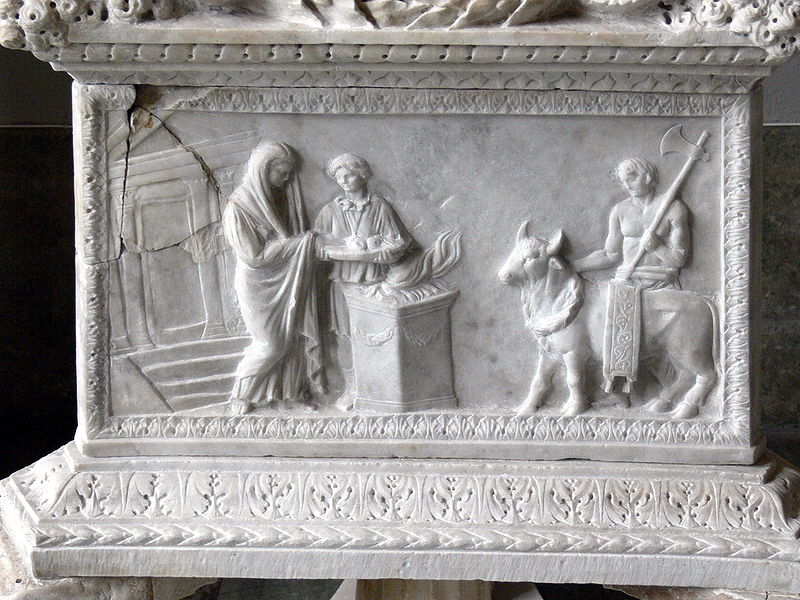
Roman relief depicting a scene of sacrifice, with libations at a flaming altar and the victimarius carrying the sacrificial axe. Courtesy of WikiCommons and Wolfgang Sauber.
It is said that on this day round cakes in the shape of wheels were offered to Summanus along with two dark oxen (since he is considered a chthonic deity). The round cakes were usually made from flour, milk, and honey. The wheel has often been argued by scholar to be a solar symbol. However, it is unclear as to why a nocturnal lightning god would relish in solar symbolic cakes
There is one solution to this contradiction: Pettazzoni offers in his essay on “The Wheel in Ritual Symbolism of Some Indo-European Peoples” (view it here)that the festival was actual celebrated on June 20th, because it was the natalis or birthday of his temple built by Circus Maximus.
Thus the wheel cakes known as summanalia are not in reference to the deity himself, but the time of year. June 20th is the day before the Summer Solstice . The Summer Solstice being the longest day of the year.
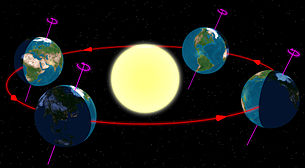
Diagram of the Earth’s seasons as seen from the north. Far left: summer solstice for the Northern Hemisphere. Front right: summer solstice for the Southern Hemisphere.
Courtesy of WikiCommons and Tauʻolunga.
Finally, it should be noted that festival for any deity no matter how small or new they were taken seriously. There were taken seriously by those who were pious and fearful of the gods, and by those who wanted to party and have a great barbeque. Sometimes, the animals that were sacrificed after having been killed were eaten by the attendees of the festival and celebration. In modern day, many of us can relate with our various patriotic holidays that somehow call for us to bbq- perhaps this is where the tradition comes from!
Thanks for reading! Hope you all found this as interesting as I found it to write it!
*Fulgura is a neuter plural noun, but the word lightnings does not exist in our English vocabulary, but habentur means “were held”- which is third person plural.
**The Pyrrhic War occurred roughly 270 BC.

Build vocabulary, practice pronunciation, and more with Transparent Language Online. Available anytime, anywhere, on any device.
About the Author: Brittany Britanniae
Hello There! Please feel free to ask me anything about Latin Grammar, Syntax, or the Ancient World.



